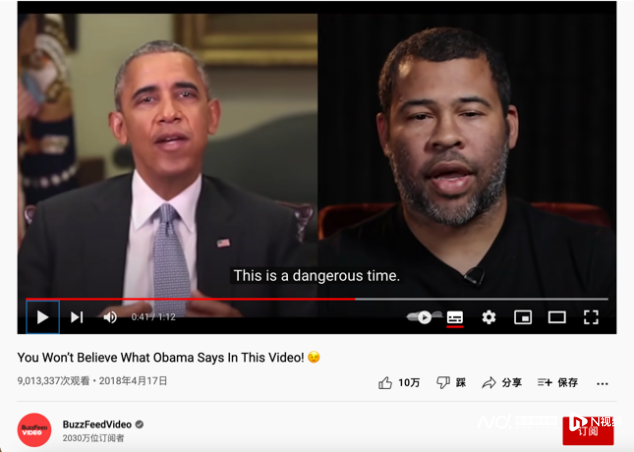Recently, according to the Japanese Economic News, Japanese camera manufacturers Sony and Nikon will join the Content Traceability and Authenticity Alliance (that is, C2PA, The Coalition for Content Provenance and Authenticity), and join forces with Adobe and Intel to fight deep forgery.
It is reported that the C2PA mentioned in the report was founded by Adobe, Microsoft, Intel, Arm (a chip designer owned by Japan's SoftBank Group) and Truepic. The alliance aims to establish open standards that can be used with any software, and is committed to allowing creators, publishers, and consumers to track changes that detect the origin of any online image and that have been tampered with.
In recent years, deep forgery has triggered many vicious incidents. In December 2017, a Reddit user synthesized the faces of several celebrities with the bodies of actresses in pornographic videos. This incident made deep forgery "famous" for a while. Later, the advent of apps like DeepNude (an app that offers free and paid services that can change images of women to be completely nude) has plunged deep forgery into controversy.
Not only in pornography fakes, the application environment of deep fakes extends to fraud, fake news, and fake politicians' speech videos. On April 17, 2018, directors Jordan Peele and BuzzFeed Video used the latest AI technology to create a fake video of former U.S. President Barack Obama to show the public the dangers of deep forgery.

Under the Russian-Ukrainian conflict, some fake videos of the leaders of the two countries also appeared on the Internet. In March, a video of Russian President Vladimir Putin appeared on social media Twitter, in which "Putin" said he had reached a peace agreement with the Ukrainian side, Reuters reported. Until March 17, however, Putin did not make the same peace statement. It turned out that the video was made from a video of Putin's public speech on Feb. 21.
In the same month, a video of Ukrainian President Zelenskiy calling for the surrender of the army was also widely circulated on social media, and the video was subsequently debunked as a forgery. Deep forgery due to counterfeiting in the political field, which has caused more serious social and even international security risks, and digital content has also fallen into a crisis of public trust.
In order to control the negative impact of deep forgery, several companies have made efforts.
Facebook launched the Deepfake Detection Challenge in December 2019, and the winner receives $500,000 in prize money. Adobe, which has a strong position in the field of content certification, has launched features such as Project Morpheus to promote the application of deep synthesis technology, while carrying out anti-deep forgery programs in content traceability. At Adobe Max2019, Adobe, together with The New York Times and Twitter, released the Cai, Content Authenticity Initiative.
After that, Adobe launched a beta version of the tool that complies with the CAI standard. Cai's official website shows that in the "i" icon in the upper right corner of the picture, users can view the attribution and historical data of digital content.
On the other hand, in response to false or misleading news media content, Microsoft launched a project on content attribution and verification in August 2020 together with BBC of British Broadcasting and Television, NYT of the United States, and CBC of Canadian Broadcasting Corporation. It is understood that this plan will provide publishers and readers with digital signature links and verification inspection materials, so that media content can be verified and traceable, and it is also possible to detect whether there are changes in images or images during the distribution process.
In this battle against deep forgery, Adobe and Microsoft joined forces to form C2PA with a common purpose of media content sources and traceability of changes. News outlets such as the BBC, The New York Times, and social platform Twitter have also become members of the alliance. The anti-deep counterfeiting side thus forms a comprehensive alliance that spans software, sensors, cameras and social media. In accordance with the technical standards being developed by the Consortium, C2PA encrypts data about the origin or variation of images or videos with content to ensure the immutability and authenticity of digital content.
In fact, the offensive and defensive battles around deep forgery and anti-deep forgery have been continuous and escalating. As Adobe's general counsel Dana Rao puts it, bad actors have been developing more sophisticated deep forgeries to evade better detection software, and there's no sign that this "competition" has a tendency to slow.
This time, the anti-deep forgery alliance has camera manufacturers Sony and Nikon joined, which may effectively enhance public confidence in the authenticity of digital content.
The alliance will reportedly reach out to more social media platforms such as YouTube to incorporate them into C2PA's open standards. Andy Passson, senior director of Adobe's content authenticity program, said this year will see more features in the market that track image sources and changes. Right now, C2PA is only relatively early in its life cycle. "I think in the next two years we're going to see a lot of end-to-end ecosystems," he said.
Compilation/Synthesis: Intern Yang Xixia Nandu reporter Jiang Lin